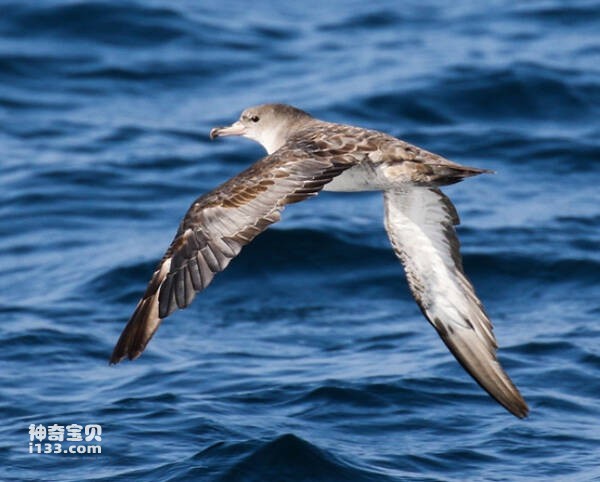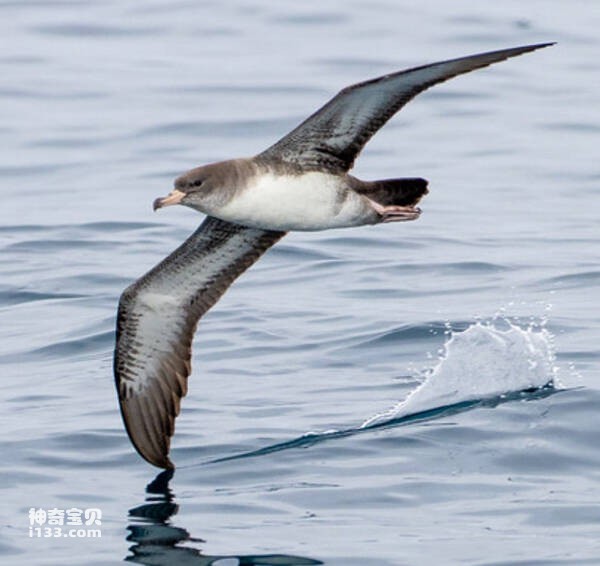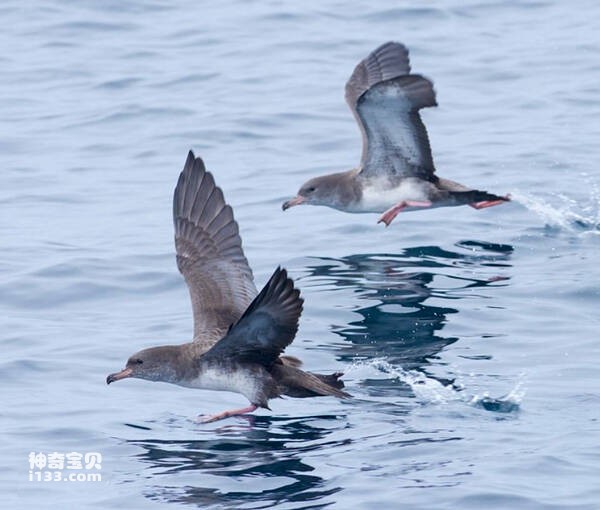Ardenna creatopus
IUCN
LCBasic Information
Scientific classification
- name:Ardenna creatopus
- Scientific Name:Ardenna creatopus,Pink-footed Shearwater
- Outline:Waterfowl
- Family:
Vital signs
- length:45-50CM
- Weight:576-889g
- lifetime:No textual research information is available
Feature
Nicknamed the "tube-nosed bird" because of the pair of bone tubes on its upper beak.
Distribution and Habitat
Non-breeding places: Colombia, El Salvador and Nicaragua.
Resident birds: Canada, Chile, Costa Rica, Ecuador, Mexico, Peru and the United States.
Wandering (non-breeding grounds) : Guatemala.
Wandering: Argentina, Australia and New Zealand.
It is found from the islands of Juan Fernandez and Mocha to the Pacific coast of the United States and occasionally to Alaska. It has been recorded in the coastal area of Choco Province, Colombia. They are also found throughout the Pacific from southern Forrest Island, Alaska, to southern SAN Carlos, Chile, and occasionally along the Atlantic coast and in the Pacific off New Zealand and Australia.
In Santa Clara, the species breeds in scattered, eroded terrain at elevations of 15-300 meters. On Moka Island, the group is located in the forest (the main tree species is the poison sheep tree Aextoxicon punctatum), with the highest density of burrows along the ridge and between the roots of old trees up to 390 m. The species is one that p
Appearance
The petrel is 45-50 cm long, has a wingspan of 109-118 cm, and weighs 576-889 grams. It's a large seabird. Although smaller in size than most shearwaters, the wingspan is larger for shearwaters with a longer wing proportion. In flight, it looks heavy and its wings beat with effort. The plumage on the head and upper body is grayish brown. The thin stripes on the head and neck become mottled to the sides of the chest. The brown spots continue down to the ventral side and blend into the darker brown underbelly, undertail coverts, and thighs, with slight pale spots. The rest of the lower body is dark white. Against a pale background, there are dark spots under the wings, especially in the armpits. The feathers vary between lighter and deeper deformations.
The sexes are similar, but the female is generally slightly smaller. The species is a highly polymorphic bird with many forms: dark, light and intermediate. The whole face is brownish gray, with small brown spots on the lower face
Details
footed Shearwater (Ardenna creatopus), footed Shearwater, has no subspecies. The pink-legged Shearwater was classified in the genus Puffinus until 2014, when it was added to the genus Ardenna.

Pink-footed Shearwaters breed in summer in the south. After breeding, the birds migrate north along the west coast of South America to North America. From April through early fall, increasing numbers of the species are observed along the continental shelf from the Gulf of California to British Columbia, marking migrations. By the end of October, numbers begin to dwindle as the birds return to Chile and breeding grounds. During the southern winter, the pink-footed shearwater travels about 21,550,000 km to the northern American continent after a breeding and nesting phase on the islands of Robinson Crusoe, Santa Clara, and Morovinilla in Chile. Their migration route crosses the coasts of Ecuador, Peru, Central America and California.
Pink-footed Shearwaters are Marine and pelagic birds that prefer waters far from shore to the continental shelf. During breeding, they stay on islands in the ocean, where they choose hills and cliffs, preferably forests. The bird breeds only on three islands off Chile and spends most of its life at sea.

Pink-footed shearwaters feed in the pelagic ocean regions of the deep ocean in temperate zones. In the sea, can appear alone or in groups, and prefers cold water. It spends the non-breeding season in western North American waters from April to November. Cruising great distances for food, their wings flutter slowly and soar faster than most other gulls. It can live alone or in groups, and is often associated with other gull species within its range, especially the sooty and sooty shearwaters. They can forage alone or in groups with other species. Pink-footed shearwaters feed primarily on the offshore waters above the continental shelf, but also in deeper waters out into the ocean. The main fish are Sardinops sagax of the Far East, Engraulis japonicus, squid and crustaceans. Caught from the surface or under water, they also follow boats in fishing waste. The birds that breed on Santa Clara Island feed on fish, with squid accounting for a smaller percentage.
The pink-footed Shearwater is a member of the order Shearwater, nicknamed the "tube-nosed bird" because of the pair of bony tubes on its upper beak. These special tubes are used to filter and drain salt so that they can drink seawater.
Pink-footed shearwaters are a social species, both in their nesting areas and in their feeding areas. They all nest in groups, one male and one female. Arrive at the colony in October-early November. Nesting in ocean islands and natural caves. They lay eggs in February, emerge and disperse in late April to late May.

Every November, pink-footed shearwaters breed on the islands of Robinson Crusoe, Santa Clara and Morro Vanilla in Chile. It forms colonies and nests in the burrow, each laying 1 egg in the burrow, which is incubated by both sexes for 48-56 days. Like most seabirds, two adults take turns hatching, caring for, and feeding one chick. Couples can stay in the nest for up to two weeks. Compared with other species, its first breeding age is relatively late; Pink-footed Shearwaters begin breeding at the age of six.
Throughout their winter range in North America, the pink-footed shearwater has priority in the waters on the outer edge of the continental shelf, an area also commonly used for longline fishing. Therefore, there are likely to be interactions between the species and the fishery throughout the range. In addition, pink-footed shearwaters tend to follow boats, which increases the likelihood of interaction. In addition, due to illegal discharge of water from oil tanks and oil spills, the species is abundant in the seagoing half of the continental shelf within its wintering range, making it particularly vulnerable to contamination by petroleum products. These last threats are the ones that most jeopardize the conservation of Canada's species.
In addition, the greatest threats to pink-footed shearwaters on land are alien predators, human disturbance, human depredation, and habitat destruction. The importance of each of these factors varies by breeding site. On Robinson Crusoe Island in the Juan Fernandez Islands, coati have been introduced to control roof rats, and the species' presence is perhaps the greatest threat to the pink-footed shearwater population in the area. In addition, although the capture of chicks is illegal, it is estimated that about 20% of the 100 chicks produced on Mocha Island each year are captured by humans. In addition, it often happens that the cave is damaged and the chicks die. Interactions between seabirds and fisheries also represent significant potential risks. During the breeding season, Mocha's pink-footed shearwaters show a strong preference for foraging in areas where fishing activity is important.
Listed on the IUCN Red List of Threatened Species (IUCN)2018 ver3.1 - Vulnerable (VU).
Protect wild animals and eliminate wild meat.
Maintaining ecological balance is everyone's responsibility!








